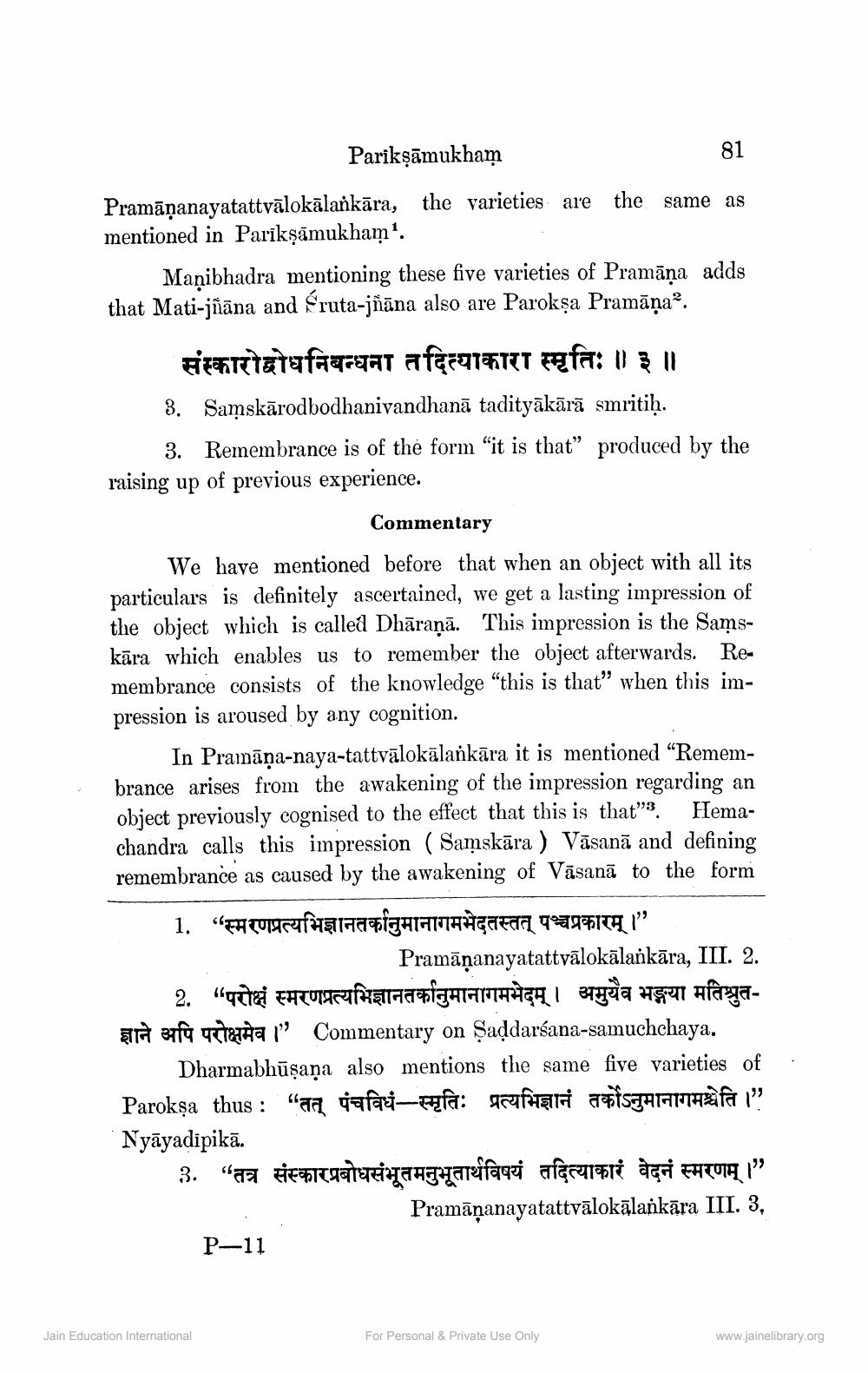________________
Parikṣāmukham
Pramāṇanayatattvālokālaṁkāra, the varieties are mentioned in Parikṣāmukham'.
Manibhadra mentioning these five varieties of Pramāņa adds that Mati-jñāna and Éruta-jñāna also are Parokṣa Pramāņa2.
81
gitaristafaazanı afçızıı œfa: 0) 3 11
3. Samskarodbodhanivandhana tadityākārā smritiḥ.
3. Remembrance is of the form "it is that" produced by the raising up of previous experience.
Commentary
We have mentioned before that when an object with all its particulars is definitely ascertained, we get a lasting impression of the object which is called Dharana. This impression is the Samskāra which enables us to remember the object afterwards. Remembrance consists of the knowledge "this is that" when this impression is aroused by any cognition.
the same as
In Pramana-naya-tattvālokālaṁkāra it is mentioned "Remembrance arises from the awakening of the impression regarding an Hemaobject previously cognised to the effect that this is that". chandra calls this impression (Samskāra) Vāsana and defining remembrance as caused by the awakening of Vasana to the form
1. “ स्मरणप्रत्यभिज्ञानतर्कानुमानागमभेदतस्तत् पञ्चप्रकारम् ।”
Jain Education International
Pramāṇanayatattvālokālaṁkāra, III. 2.
2.
“परोक्षं स्मरणप्रत्यभिज्ञानतर्कानुमानागमभेदम् । अमुयैव भङ्गया मतिश्रुतa af " Commentary on Saddarśana-samuchchaya. Dharmabhūṣaṇa also mentions the same five varieties of Paroksa thus : “तत् पंचविधं - स्मृतिः प्रत्यभिज्ञानं तर्कोऽनुमानागमश्चेति । ” Nyayadipikā.
3. “ तत्र संस्कारप्रबोधसंभूतमनुभूतार्थविषयं तदित्याकारं वेदनं स्मरणम् ।” Pramāṇanayatattvālokālaṁkāra III. 3,
P-11
For Personal & Private Use Only
www.jainelibrary.org




